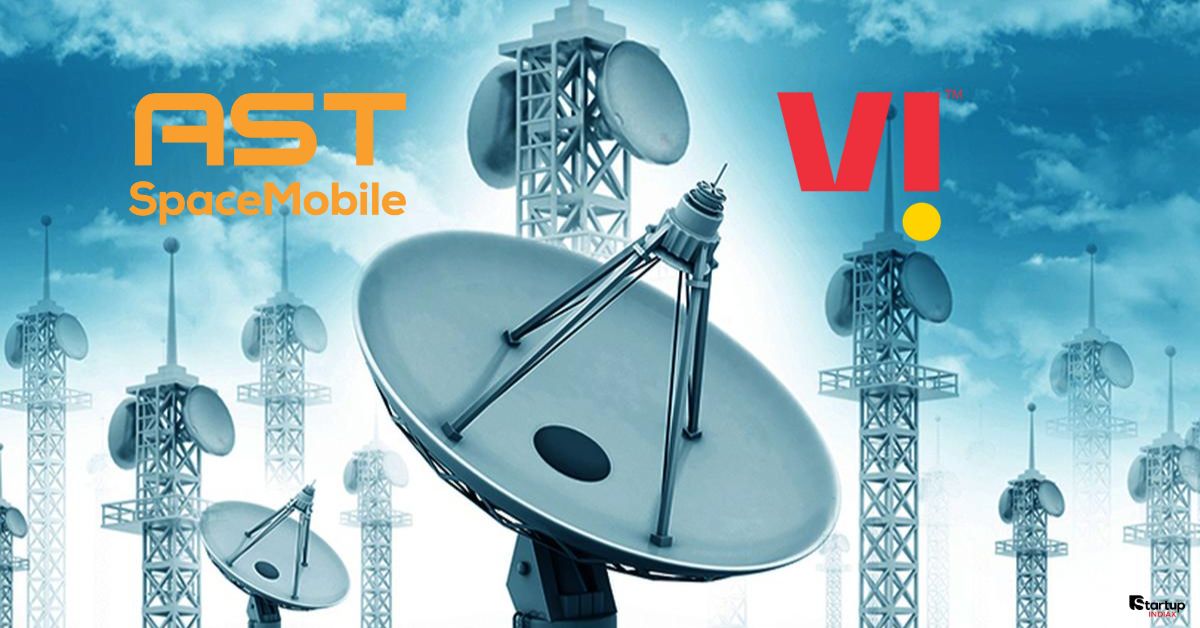Vi-AST SpaceMobile Partnership for Satellite Connectivity isn’t just another deal—it’s a seismic shift in India’s telecom battlefield. With 1.1 billion mobile subscribers yet 40% of rural areas languishing in “dead zones” this alliance aims to turn the sky into a cellular highway. For Vi—trailing Jio and Airtel in India’s brutal 5G race—this partnership is a high-stakes gamble to dominate the next frontier: direct-to-phone satellite connectivity. But can space tech outmaneuver terrestrial titans? Let’s dissect the game.
1. The Vi-AST SpaceMobile Breakthrough: No Dish, No Distress
How It Works
- Cell Towers in Space: AST’s massive low-earth orbit (LEO) satellites (with tennis-court-sized antennas) beam 4G/5G signals directly to unmodified smartphones. No dishes, apps, or hardware upgrades needed.
- Seamless Switching: Phones auto-connect to satellites when terrestrial networks fail—ideal for mountains, deserts, or flood-hit regions.
- Proven Tech: World’s first space-based 5G voice call (2023) and 10 Mbps downloads validate its viability.
Strategic Edge
- Exclusivity: Vi is AST’s sole India partner, locking rivals out until at least 2026.
- Beyond Voice: Targets IoT sensors for agriculture, maritime tracking, and disaster response—markets Jio/Airtel can’t yet touch
2. Jio & Airtel: Counterattack Strategies
| Player | Satellite Partner | Focus | Consumer Reach |
|---|---|---|---|
| Vi | AST SpaceMobile | Direct-to-smartphone | Rural users, IoT, emergencies |
| Jio | SES (O3b mPOWER) | Enterprise backhaul, fixed broadband | Limited direct phone access |
| Airtel | OneWeb | Maritime/aviation, government | No direct-to-phone yet |
| Starlink | SpaceX | User terminals (dishes) | Requires hardware investment |
- Jio’s Weak Spot: Focuses on enterprise backhaul—not mass consumer mobility. Its SES deal lacks AST’s phone-native tech.
- Airtel’s Lag: OneWeb excels in aviation connectivity but trails in smartphone integration.
- Starlink’s Hurdle: Despite GMPCS license, it requires terminals—a barrier for rural adoption.
💡 Expert Take: “Vi’s exclusivity forces Jio/Airtel to accelerate roadmaps, but affordability will decide if this disrupts or fizzles“
3. Make-or-Break Challenges
Regulatory Minefields
- Spectrum Wars: TRAI recommends administrative allocation (fixed fee), but Jio/Airtel demand auctions—delaying launch.
- Timeline Risk: Service targets 2026, pending satellite deployments (60+ LEO sats) and approvals.
Affordability vs. Ambition
- Satellite data may cost 2-3x more than terrestrial plans. Vi must subsidize to attract India’s price-sensitive rural users.
- Contrast: Startup SpaceCoin plans $2/month satellite broadband—setting a benchmark Vi can’t ignore.
Scalability Questions
- AST’s 60-satellite fleet (2026) pales against Starlink’s 6,000+, raising capacity concerns
4. Beyond Telecom: India’s Socio-Economic Payoff
- Disaster Resilience: Floods/cyclones often kill terrestrial networks. Satellite SOS could save lives.
- Farm Tech Revolution: Soil sensors in Punjab’s fields could relay real-time data via satellite.
- Startup Goldmine: Startup INDIAX predicts a surge in AgriTech, logistics, and telemedicine ventures
5. The Verdict: Can Vi Out-Orbit the Giants?
✅ Yes, if:
- Vi prices satellite access near terrestrial rates (leveraging government subsidies).
- AST’s tech scales smoothly by 2026.
- Jio/Airtel stall on direct-to-phone R&D.
❌ No, if:
- Premium pricing alienates rural users.
- Spectrum delays push launch to 2027+ (letting Starlink/Jio gain ground).
- Airtel accelerates OneWeb’s smartphone integration.
🌐 The Bigger Picture: Success could make India a blueprint for Africa and Southeast Asia—proving satellite can democratize connectivity
Conclusion: India’s Satellite Tipping Point
The Vi–AST SpaceMobile partnership isn’t just about connectivity—it’s a litmus test for India’s digital future. While AST’s direct-to-phone tech gives Vi a temporary edge over Jio and Airtel, victory hinges on navigating spectrum politics and pricing satellite access at mass-adoption levels. If executed affordably, this alliance could connect millions in India’s “digital dark zones,” unlock agritech revolutions, and position Vi as an unlikely innovator. Yet delays or premium pricing would cede ground to Starlink’s terminals or Jio’s backhaul prowess. One truth is undeniable: satellite connectivity is no longer sci-fi—it’s India’s next great tech battleground, and the winner will own the narrative of ubiquitous coverage. For Vi, this is resurrection or ruin. For India, it’s the final bridge across its digital divide.

